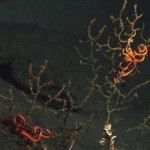The Supreme Court rebuffed attempts by a California judge to impose limits on the US Navy last November by suspending the use of mid frequency sonar during training exercises offshore. But that’s not to say the US Navy has given up on whales.
NOAA recently announced they will be working with the Navy to protect marine mammals and assess mitigation measures during sonar training in the Gulf of Mexico and on the Atlantic Coast.
January 23, 2009
NOAA’s Fisheries Service has issued regulations and a letter of authorization to the U.S. Navy that includes measures to protect marine mammals while conducting Atlantic fleet active sonar training off the Atlantic coast and in the Gulf of Mexico. The regulations require the Navy to implement measures designed to protect and minimize effects to marine mammals.
Along with issuing these regulations, NOAA will undertake a comprehensive review of all mitigation measures applicable to the use of sonar and will report to the Council on Environmental Quality regarding the results of this review within 120 days.






I met with two whale biologists this Christmas who are doing PhDs funded by the US Navy into how Navy activity affects whales at the AUTEC test site in the Tongue of the Ocean, Bahamas. They were positive and said that the Navy had been helpful and cooperative.
http://www.bahamaswhales.org/news/2008/news_Dec08.html
If NOAA and the Navy are as conscientious as they would like us to believe then why, exactly, do they (the Navy) plan to build a NOAA- supported aonar testing range in the midst of the right whale calving grounds of offshore Jacksonville, FL? There is certainly sufficient and compelling evidence that this will prove devastating to a species who number less than 350. The so-called “mitigation efforts” seem to be a rather transparent PR gambit in an attempt to call off the NRDC watch-dogs.